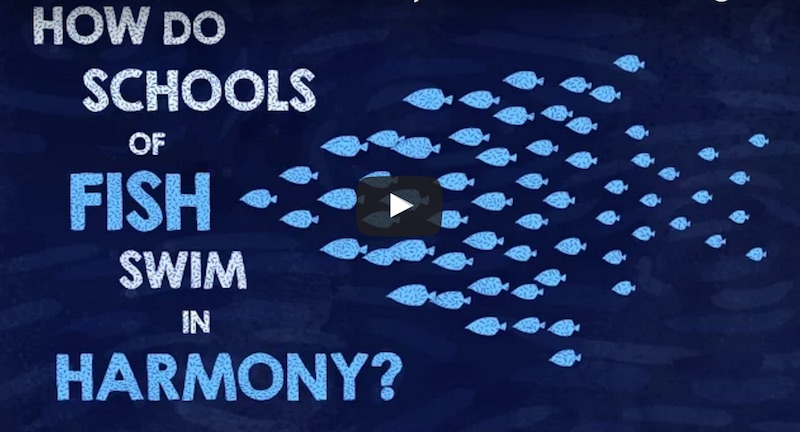The ocean and reef environment is home to many interesting and fascinating behaviors. Schooling fish is among the first such notable behaviors that visitors of the underwater realm can usually see in abundance, but we’re still trying to figure out how this seemingly complex and coordinated behavior emerges in the first place.
For years behavioral scientists have theorized that schooling behavior might be governed by simple mechanisms but it’s only recently that we’ve been able to tease apart these ‘rules of schooling’. As it turns out, the guidelines to forming a nice hypnotic school of fish are incredibly simple. One, stay close to your neighbor, but not too close and two, just keep swimming!

Stay close . . . and keep swimming
When you have just a few fish together, it’s hard to see the emergence of a schooling pattern, as in aquariums where generally only a few specimens are kept together in a single tank. But when more fish join the group, the small movements of each individual fish add up to create something different, and a larger pattern becomes visible.
Insights into the mechanics of schooling fish and bird flocks have been tested by computer simulations for years and mountains of data seem to confirm that schooling behavior really is that simple. This new video from TED-ed neatly illustrates not only how fish school, and the rules that govern this behavior, but also the myriad of ways that schooling behavior is a form of emergence that is seen in many other natural phenomenon.



